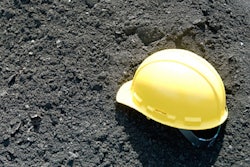
Conducted by the Centers for Disease Control and Prevention, the “Hearing Impairment Among Noise-Exposed Workers” study estimated the prevalence of hearing loss at six levels using hearing tests performed between 2003 and 2012. The study expressed the impact of hearing loss on quality of life as annual disability-adjusted life years (DALYs).
The mining sector had the highest prevalence of workers with hearing impairment, followed by the construction and manufacturing sectors. Seventeen percent of mining workers whose hearing tests were included had one of the six levels of impairment, while 3 percent had moderate or worse impairment.
Construction was next with 16 percent of workers testing positive for any impairment and, like mining, 3 percent with moderate or worse.
Manufacturing rounds out the top 3 with 14 percent and 2 percent, respectively.
The CDC estimates that mining and construction workers lost 3.45 and 3.09 healthy years per 1,000 workers, respectively, due to their occupation.
The CDC notes that “current noise regulations do not require audiometric testing for construction workers. Without testing to identify workers losing their hearing, intervention might be delayed or might not occur.” Because of that, the CDC stresses the importance of proper hearing loss prevention through ear plugs and other methods of protection on construction sites.
“…Even mild-to-moderate impairment during working years can culminate in more healthy years lost during retirement,” the study explains. “Prevention also has short-term benefits; persons with even mild hearing loss experience reduced audibility (loudness), reduced dynamic range of hearing (the difference between the softest and loudest perceptible sounds), and increased listening fatigue. They also often experience difficulties understanding speech, especially in the presence of background noise. Other effects include degraded communication (2), cognitive decline, and depression.”
With approximately 22 million U.S. workers exposed to hazardous occupational noise, hearing loss is the third most common chronic physical condition in the U.S. and is the most common work relate illness among American workers.












